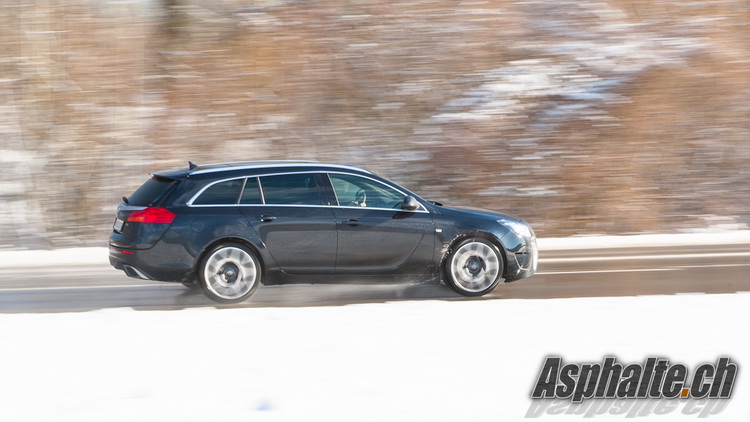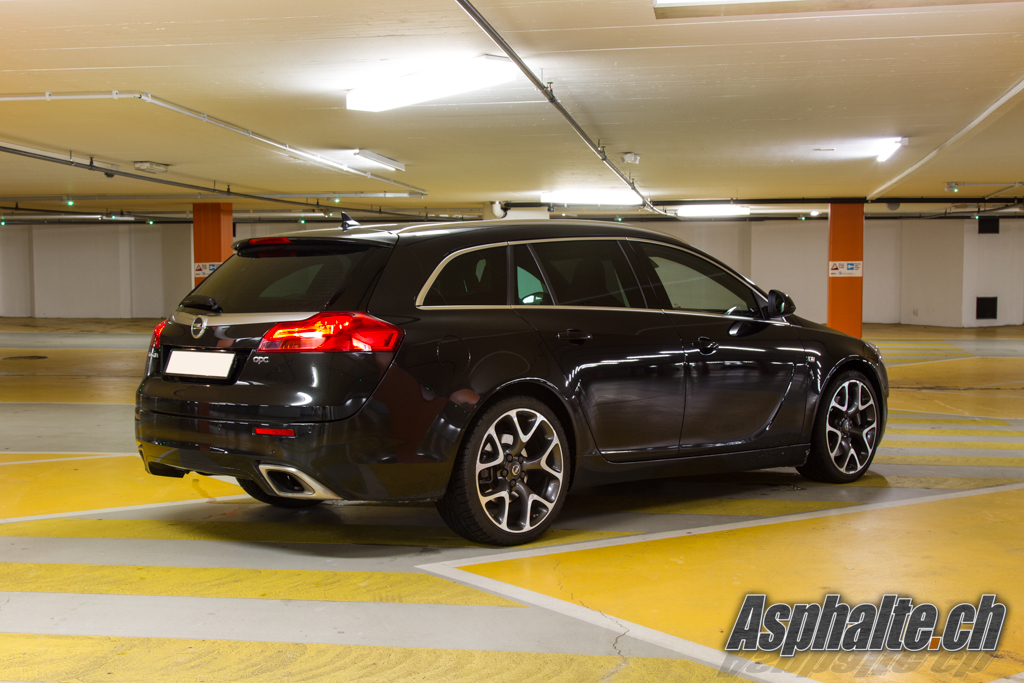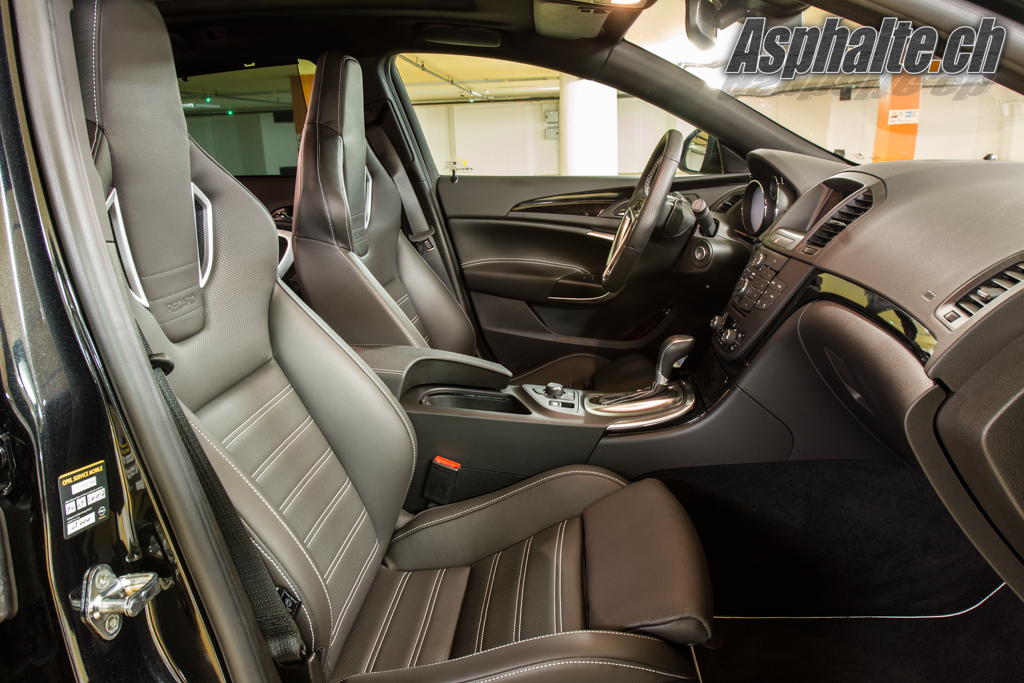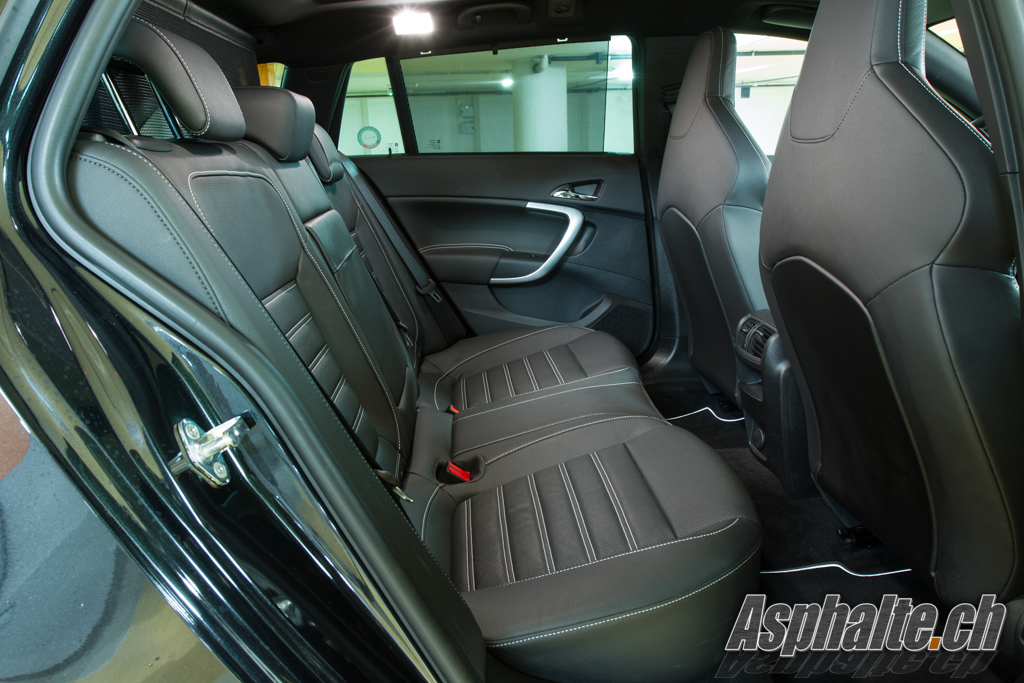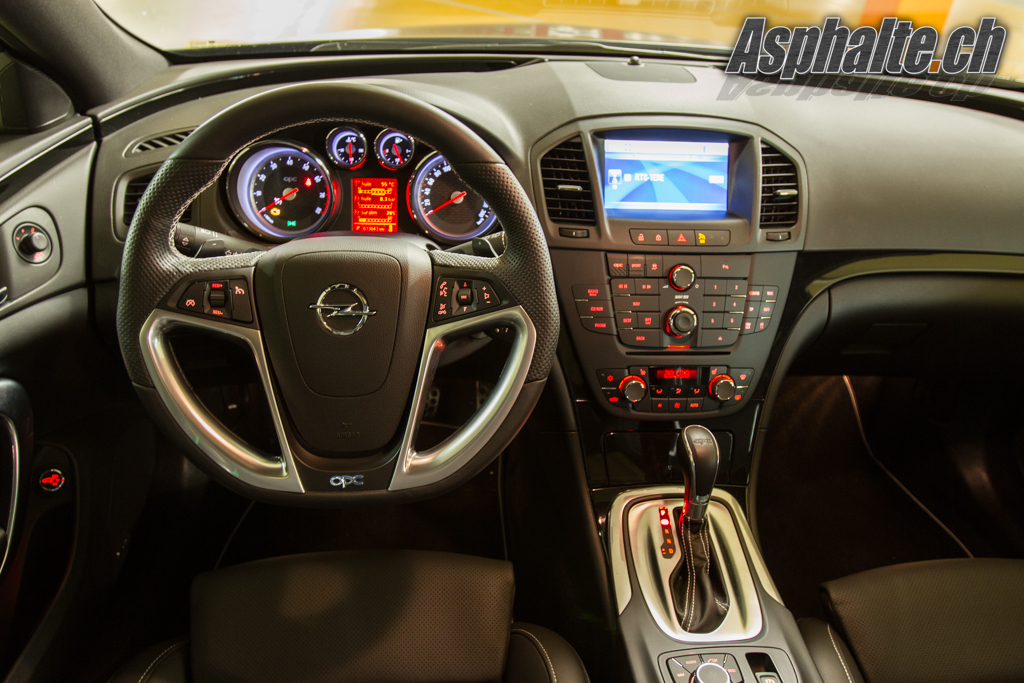Long term test: Opel Insignia OPC Sports Tourer
A long term test report on the Opel Insignia OPC Sports Tourer.
Three years ago, we tested the Opel Insignia OPC when it was launched on the market. It demonstrated abilities which, in comparison with competition, made it attractive value for money. We come back to the Insignia OPC, but this time in the context of the Sports Tourer in our long term fleet.
The Sports Tourer, Opel’s brand for the wagon version of the Insignia, is 143 kg heavier on paper than the OPC sedan we tested 3 years ago due to the larger body panels and the automatic gearbox. While the weight gain is perceivable on the road, but the strengths remain the same. Interior volume is spacious, a sensation increased by the panoramic sunroof. With 4.90m in length, the Insignia’s outer dimensions are closer to an Audi A6 Avant than the 4.72m A4 Avant. Perceived quality is very good, no rattles or wear marks have shown up in a year. The on-board computer functions, such as oil temperature and pressure, voltmeter and tire pressure (optional) or turbo pressure (in %, 100%=0.9 bar), are very useful in daily usage. The leather wrapped front bucket seats are very ergonomic and deserve the award they received in Germany. They are relaxing on long journeys and allow a precisely adjusted driving position for all body sizes. The automatic AC also earns kudos, doing an excellent job whatever the outside temperature is. On long summer trips, no draft or cold points disturb life on board, a strong point for a key ingredient of comfort in a family-oriented grand tourer.
In night driving conditions, the directional AFL headlights contribute to comfort as well, adjusting their beam with speed by widening at low speeds and reaching further out at higher speed, with lateral adjustments in corners. The automatic switching function for oncoming traffic works well, but leaving the car decide the point of switching is a matter of driver preference. Another gadget, the rear window defroster which turns itself on automatically when condensation is detected.
The powertrain demonstrates competence in daily commuting, but lacks the sporty edge of the 3.0 TFSI used on the Audi S4 for instance. The 6 gear automatic torque converter box does not compare with modern dual clutch systems. Upshifts are quick, but downshifts are slow. Adequate for normal driving, but it overall leaves quite bit to be desired. The exhaust note is surprising, coming courtesy of a stock Remus system. It can prove a bit tiring between 2000 and 2500 rpm, which happens to be the legal cruise speed on swiss freeways. Opel claims 325hp at 5250 rpm and a peak torque of 435Nm at … the same 5250 rpm, which is surprising for a turbocharged engine. It appears that this engine is severely restricted in stock form, for an unknown reason. On the dyno, peak power is reached at 5700 rpm, while the torque curve is prefectly flat from 2900 to 5700 rpm, with measurments matching manufactrer claims. This translates into a very linear – and somewhat dull – power delivery, not helped by the significant weight of the car. This car has been fitted with a certified chip tuning from Delta Motor, specialist and partner for Opel in Switzerland. Peak power gain is only 25hp, but torque jumps by more than 100 Nm on the entire rev range. Reprogrammed that way, the Insignia OPC displays a more entertaining delivery between 3 and 6000 rpm, with a less laggy response.

